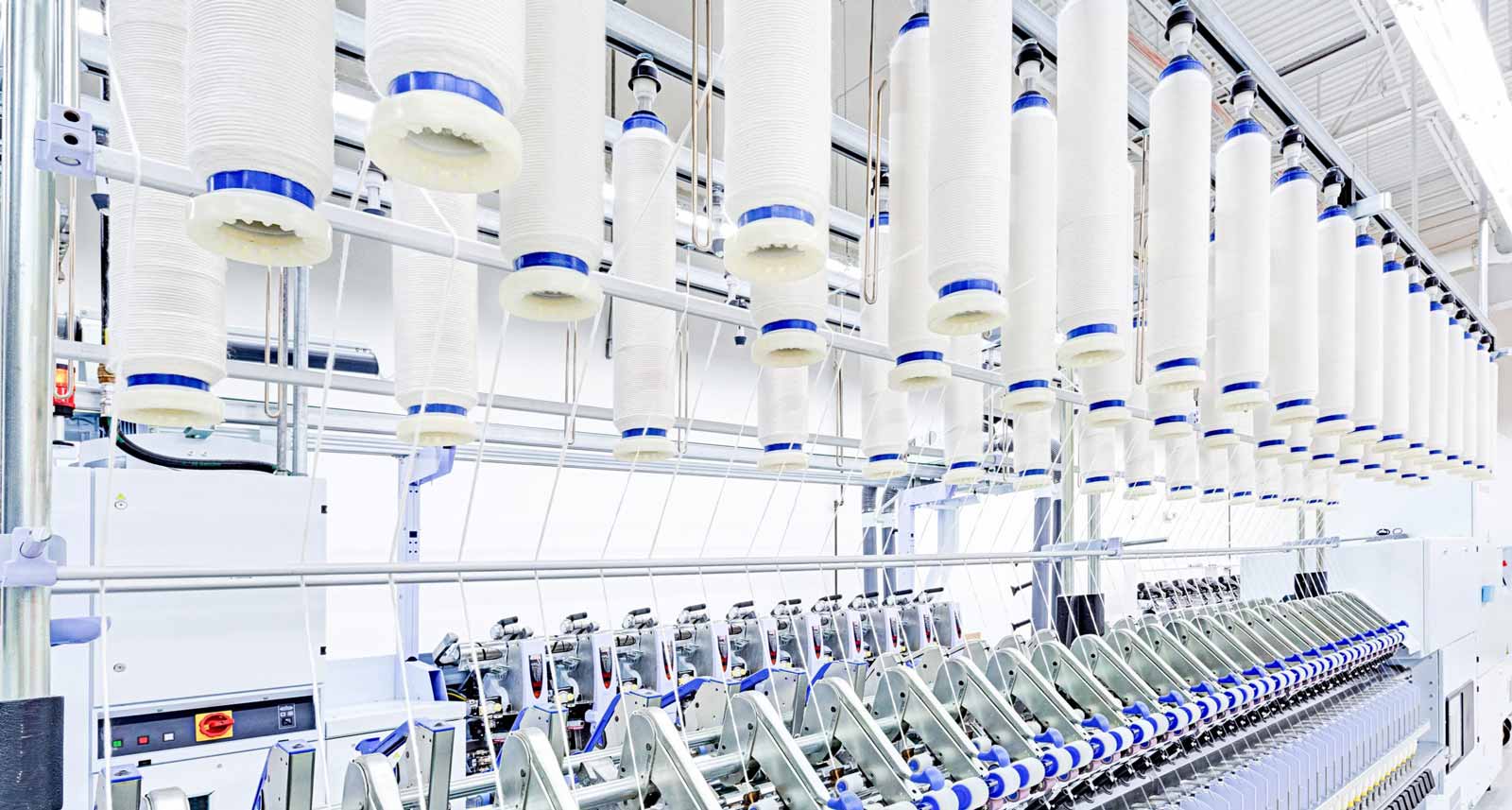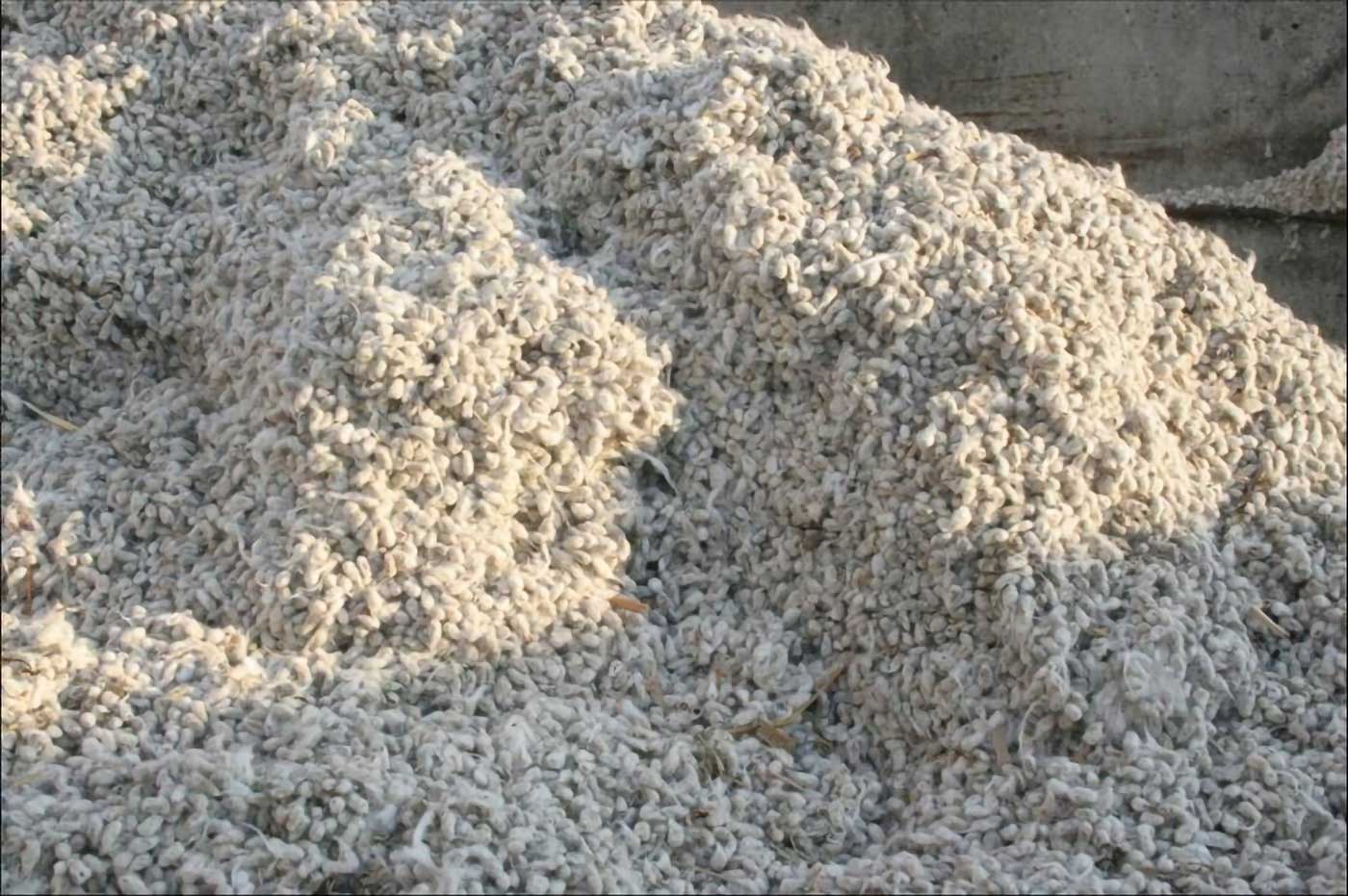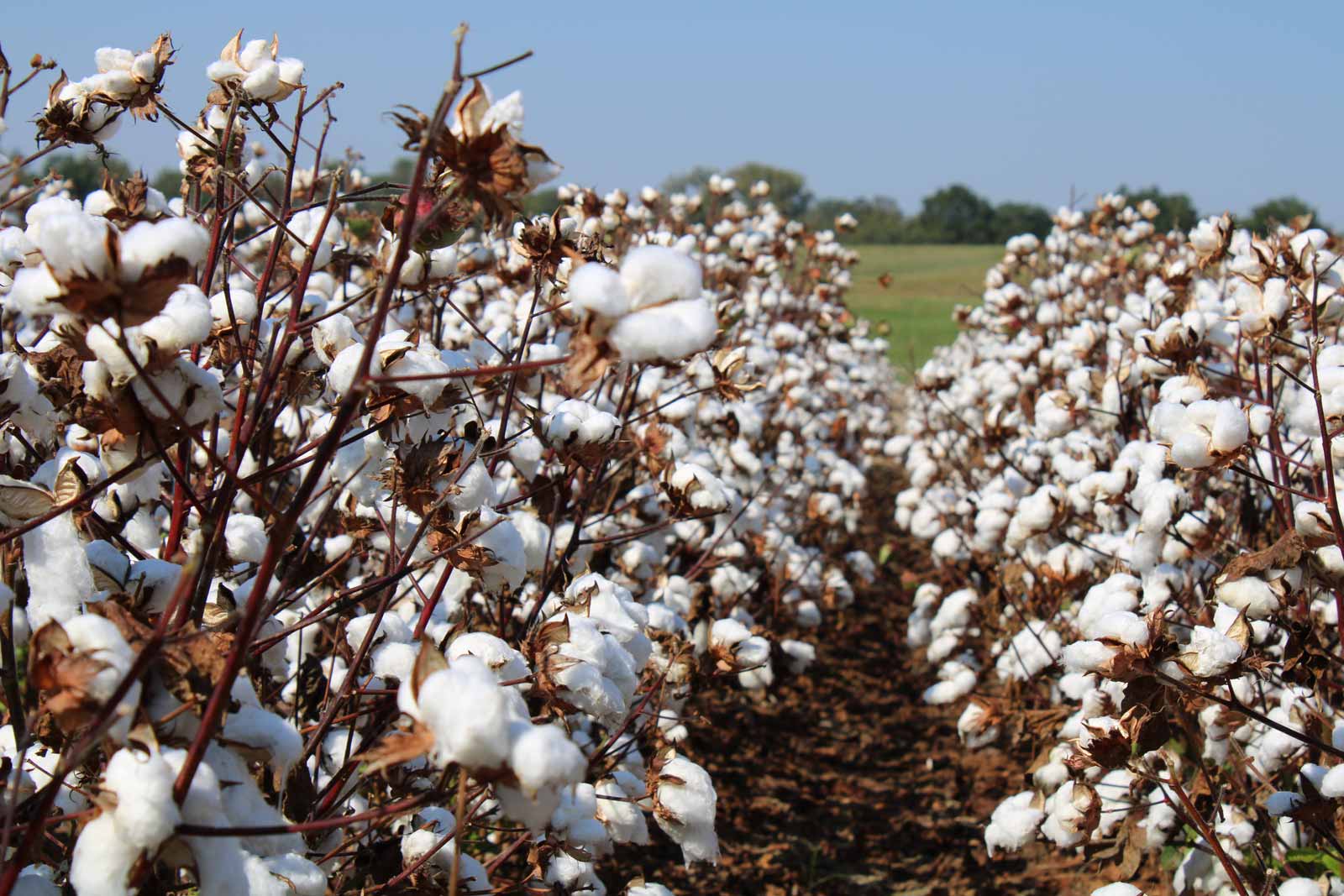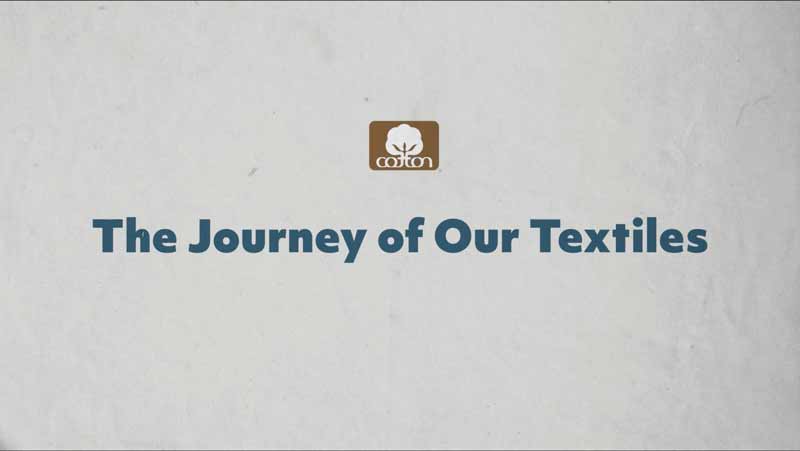- The Current State: Our global economy, heavily reliant on a “take-make-waste” model, is exerting significant strain on our planet and depleting resources. The shift towards a circular economy is a possible solution that industries need to undertake. Utilizing natural fibers like cotton, which can be grown, reused, and recycled, along with sustainable practices, can enhance circularity and reduce environmental impact.
- Role of Circularity Standards: The transition to a circular economy can be challenging without a common ‘language’ and framework. This is where standards like those from the International Organization for Standardization (ISO) become crucial, providing a roadmap for this transition.
- From Linear to Circular Economy: The circular economy offers opportunities to support sustainable development and improve resource efficiency in the fashion and textile industry. However, transitioning towards this model does come with challenges. These include differing capacities for preserving a product or material’s value through repair, reuse, recycling, or other methods, as well as the necessity for dependable data collection to accurately measure core indicators and impact. Overcoming these hurdles will necessitate collaboration and partnership among all industry stakeholders.
- How Cotton Supports Circularity: As a plant-based natural fiber, cotton embodies circularity through its reusability, recyclability, and biodegradability. Every part of the cotton plant, including lint, seeds, and by-products can be utilized. The durability of cotton enhances both the longevity and value of its products. Cotton Incorporated launched the Blue Jeans Go Green™ denim recycling program in 2006 to help support a circular economy. This program extends the lifecycle of cotton fabrics by transforming discarded denim into new products such as building insulation, pet bed inserts, and eco-friendly packaging materials. Since 2010, Cotton Incorporated has been researching cotton composting. This process diverts textiles from landfills, promotes resource efficiency, and reduces landfill methane emissions.
The concept of a circular economy is increasingly gaining momentum across various sectors, including cotton production and the fashion and textile industry. This approach emphasizes optimizing resource utilization and eliminating waste throughout the entire production and consumption cycle. It further promotes extending the lifespan and usage of these resources, prioritizing the reuse of goods and materials instead of discarding them as waste. Shifting towards a circular economy is a path forward for preserving our environment. However, without a common ‘language’ and framework, it can be challenging for an industry to transition towards a circular economy. This is where standards like those from the International Organization for Standardization (ISO) come into play. As an independent, non-governmental international entity, ISO develops and publishes standards that serve as a roadmap for industries undergoing this transition.
The guidance for this shift towards a circular economy is provided in the ISO 59000 family of standards. These standards play an important role as they provide comprehensive guidelines for implementing a circular economy, ensuring that businesses worldwide have a common framework to follow. I had the privilege to participate in their development, which also involved representatives from over 100 countries and multiple non-governmental organizations, highlighting the global significance of this work.
Countries use these standards as tools to address their unique challenges and formulate regulations within their jurisdictions. Organizations can also use these standards to evaluate their current practices, identify areas for improvement, and guide their transition towards a more sustainable, circular model.
Understanding ISO Standards on Circular Economy
ISO has published a series of standards that provide valuable tools for companies looking to embrace the circular economy:
- ISO 59004 “Circular Economy – Vocabulary, principles and guidance for implementation”: This standard helps users understand the key terminology and principles of the circular economy. It provides guidance for implementation using a framework and action areas, helping organizations to transition towards more sustainable practices. By understanding and engaging in a circular economy, companies can contribute to sustainable development.
- ISO 59010 “Circular Economy – Guidance on the transition of business models and value networks”: This standard offers guidelines for companies seeking to transform their business models and value networks from linear to circular. It applies to any organization that engages in products or services. The focus is on strategies to implement circular economy practices at both organizational and inter-organizational levels. The structured approach outlined in this standard can help improve resource efficiency and create economic opportunities through innovation and resilience, which are beneficial for companies’ growth and sustainability.
- ISO 59020 “Circular economy — Measuring and assessing circularity performance”: This standard is crucial for organizations transitioning towards a more circular economy as it provides a clear methodology for measuring and assessing circularity performance. It aims to standardize the process of data collection and calculation using mandatory and optional circularity indicators, ensuring consistent and verifiable results. Moreover, it enhances transparency, accountability, and stakeholder trust, which are vital for companies’ reputation and customer relationships.
These interconnected standards guide organizations in implementing and achieving a circular economy, covering everything from principles to measurement. By adhering to these standards, companies can make significant strides towards sustainability, efficiency, and long-term success.
Indeed, implementing these standards necessitates consistent and verifiable data collection using mandatory and optional circularity indicators. While this may seem daunting, it also presents an opportunity for increased collaboration and partnership across the industry. Stakeholders throughout the fashion and textile industry—including growers, manufacturers, brands, and companies that enable alternative pathways at the end of use—have the chance to unite in their efforts to gather reliable data, thus streamlining the transition towards a circular economy.
From Linear to Circular: The Importance of Transitioning to a Circular Economy
Our global economy is largely built on a “take-make-waste” model, where natural resources are extracted, used, and then discarded as waste. This inefficient model is pushing our planet to its limits, driving climate change, and depleting the resources we need for future generations. It’s not just an environmental issue; it simply makes economic sense to make better use of scarce resources by designing a system to avoid waste and keep materials in use for longer.
Applying circular economy principles to the fashion and textile industry presents a wealth of opportunities for sustainable development and resource efficiency. Brands such as EILEEN FISHER have integrated circular principles into their business model in a comprehensive and innovative way. Their commitment to responsible production involves designing products with longevity, recyclability, and reuse in mind from the very beginning. The company has categorized the stages of their clothing into three lives: First Life (EILEEN FISHER products made from new materials, designed with sustainability in mind), Second Life (reused and repaired items collected through the Renew take-back program) and Third Life (upcycled items and downcycled fibers, ensuring that nothing goes to waste).
However, the transition towards a circular economy is not without its challenges. One significant technical hurdle is the recycling process. This includes varied recycling capabilities across regions and the complexity of recycling certain materials. In the textile industry, for instance, mixed-fiber fabrics can be difficult to recycle, and the quality of recycled materials can degrade over time. However, these hurdles underscore the need for innovative solutions beyond just recycling. Key principles of a circular economy include keeping products and materials in use at their highest value for as long as possible and regenerating natural systems. This could involve designing durable products, offering repair services, or using regenerative farming practices that improve soil health and biodiversity.
Unraveling the Thread: How Cotton Supports Circularity
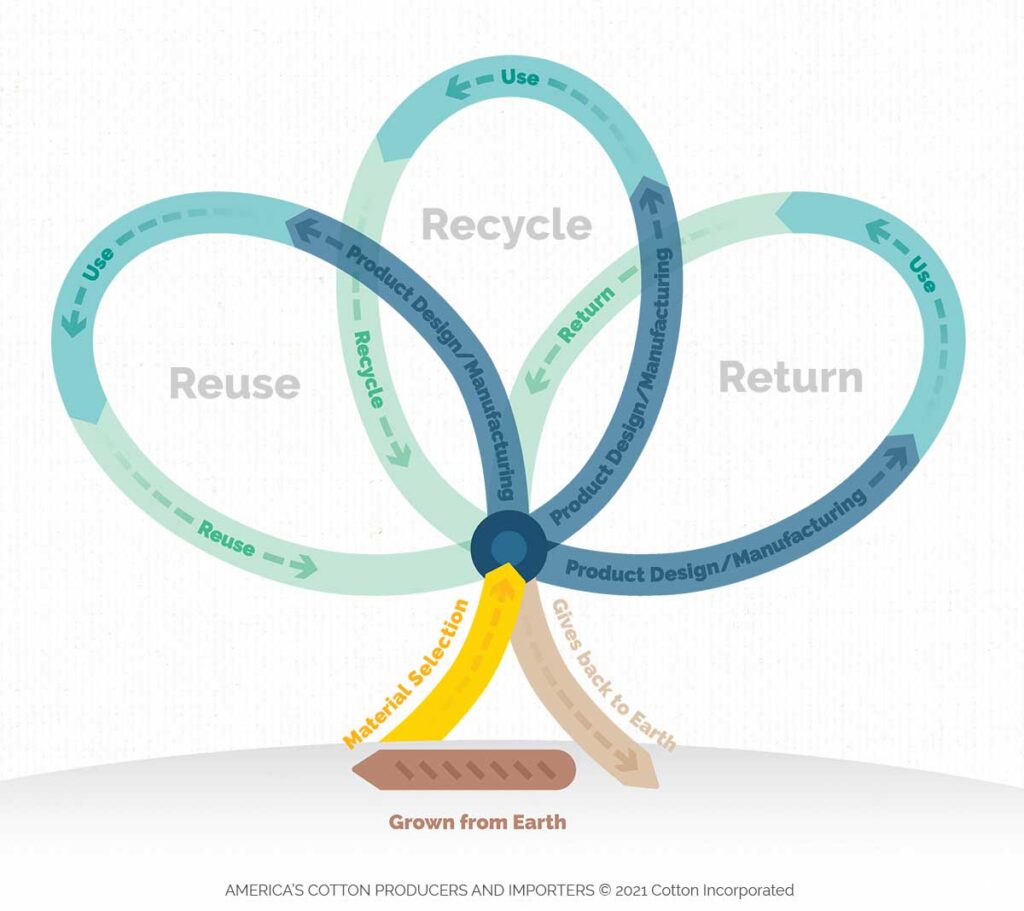
A key aspect of cotton’s contribution to circularity is its durability. The robustness of cotton allows it to withstand multiple uses, promoting repair, reuse, repurposing and reducing waste. This quality also enhances the resale value of cotton garments, supporting the growing trend of second-hand markets. According to ThredUp’s 2024 Resale Report, the secondhand market is projected to reach $350 billion by 2028, demonstrating the increasing consumer interest in sustainable fashion choices. With the rise of resale platforms, consumers are increasingly buying and selling used cotton products, thereby extending their lifecycle.
Cotton Incorporated has several initiatives that help extend the number of lifecycles of cotton fabrics and the carbon they store. One such initiative is the Blue Jeans Go Green™ denim recycling program, which transforms discarded denim into innovative new products. These range from building insulation materials to pet bed inserts and thermal insulation used in eco-conscious food and pharmaceutical packaging. Since 2010, Cotton Incorporated has also been conducting research on cotton composting. Recycling cotton waste through composting not only diverts textiles and clothing from landfills, but it also promotes resource efficiency and reduces methane emissions in landfills. By converting textile scraps and by-products into valuable resources for soil improvement, composting could substantially enhance soil health. Additionally, it could potentially reduce the need for synthetic fertilizers on farms, thereby lowering greenhouse gas emissions.
Conclusion
The transition towards a circular economy is an essential evolution across various sectors, including the fashion and textile industry. However, there is significant work still to be done along the value chain. According to the Environmental Protection Agency, approximately 11.3 million tons of textile waste, equivalent to 30 times the weight of the Empire State Building (365,000 tons), end up in U.S. landfills annually.
As companies endeavor to implement circular economy principles, they will inevitably encounter challenges. ISO standards offer a valuable roadmap for this transition, providing guidelines that cover everything from fundamental principles to measurement techniques. This ensures businesses worldwide can follow a common framework.
Ultimately, the transition to a circular economy represents a hopeful and promising path towards a more sustainable future. It’s a collective journey that requires commitment, collaboration, and innovative thinking – but the rewards, from environmental preservation to economic resilience, are well worth the effort.

